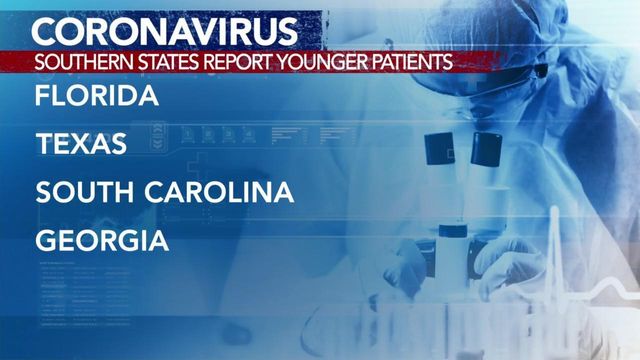As pandemic continues, cases of COVID-19 shift to younger residents
Public health experts across the country say they're seeing the concentration of COVID-19 cases shift from older age groups to younger ones as the pandemic continues.
Posted — UpdatedCounty data shows Wake residents aged 18 to 34 made up about 25 percent of all new COVID-19 cases during the week ending May 8. Six weeks later, the same age group made up about 33 percent of new weekly cases.
County residents aged 35 to 54 still make up the largest percentage of new cases for the week ending June 19, but that proportion has stayed essentially flat since late March.
The share of new cases for residents aged 55 to 74, however, has seen a decline in recent weeks. As of June 19, they made up less than 15 percent of new weekly cases, down from a high of around 35 percent in early April.
But Wake County is by no means alone.
DHHS data as of Tuesday afternoon shows that North Carolina residents aged 25 to 49 make up 45 percent of cumulative COVID-19 cases overall.
Aaron McKethan, senior policy fellow at the Duke-Margolis Center for Health Policy, said that statewide data shows a decided shift.
Two months ago, he said less than one-third of all cases were between the ages of 18 and 40. That demographic now represents about 41 percent of cases by his count. Meanwhile, he said the percentage of cases for people over 56 has continued to fall, with other groups holding relatively steady.
“It’s hard to know definitely what this means," McKethan said in an email Tuesday. "One theory is that more widespread testing captures an increasing number of younger, lower-risk populations compared to the exposure of older, higher-risk patients in preceding months.”
Given the recent uptick of hospitalizations across the state, McKethan said the shift could mean less severe illness overall – even as the number of lab-confirmed cases continues to spike.
“Of course, increasing reported COVID-19 case counts is not good news, regardless of the age of the patient," he said. "But the silver lining in this shift is that younger, lower-risk people may be less susceptible to hospitalizations and deaths than older people with greater rates of underlying health conditions.”
Related Topics
• Credits
Copyright 2024 by Capitol Broadcasting Company. All rights reserved. This material may not be published, broadcast, rewritten or redistributed.





